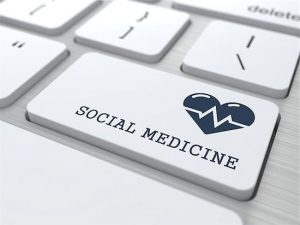Popular Misconceptions in Healthcare About Social Media
Today, almost all healthcare organizations and medical practices have both a website and some kind of social media presence. For most medical practices, the aim of their social media strategy is to simply build up their brand name locally, and appeal to potential patients in the geographic area.
Using the social media to advance your brand to an audience can be a very powerful thing, even for a local healthcare practice. By showcasing the services offered and presenting an image of a friendly and helpful office culture, prospective patients can be drawn in to become loyal ongoing patients.
However, there are a number of misconceptions about how social media should be used by healthcare organizations, and the results it can achieve, and these misconceptions sometimes get in the way of having the most effective possible social media strategy.
Misallocated Resources in Social Media
Many healthcare organizations have the perception that they’re doing the right thing in hiring an eager advertising professional to help them with their marketing initiatives. To that end, fresh content gets posted to the social media every day, great photos are posted, and all content is even aligned nicely with your brand.
While this is admirable in its intent, the truth is that the results from all this are going to be minimal at best – it simply is not going to drive traffic to your website or to your business. These efforts are known as organic advertising, and they attempt to drive traffic to your website through search engine optimization and other techniques, but the bottom line is they will attract very few new patients.
What really works statistically, is paid digital advertising, and that means that for the most part, any resources spent on organic advertising are probably misallocated.
Followers Actually See Your Posts
In 2007, Facebook launched its fan pages to provide marketers with the opportunity of expanding their social reach to levels they had never achieved before, and hordes of businesses jumped at the opportunity of this free advertising. However, five years later it was determined that only about 16% of Facebook page posts were actually being viewed by followers, and a couple years later that percentage had already dropped to 6.5%.
At the present time, it is conservatively estimated that posts on your Facebook page are actually only seen by 2% of your followers. A big part of this steady reduction is Facebook’s introduction of the “Friends and Family First”, which aimed at providing users with more posts from people they actually cared about. What that means for businesses is that there are only a tiny fraction of your followers who actually see your content at any given time.

Social media isn’t as easy as pressing a button but there are many misconceptions about how effective it is.
Facebook Reach Overcomes Small Viewing Percentage
Despite the steady statistical drop referenced above, which most medical practices are probably unaware of anyway, many medical practices still have considerable faith in the enormous reach of Facebook and think that even a 2% organic reach can be effective. But if you think about that for a moment, you should see that it’s a pitiful reach for your efforts. For example, if your medical practice had 1,000 followers, only an average of about 20 of them would see any of your posts at all, and some percentage of those 20, would consider them irrelevant and not even read them.
The truth is, most people on the social media do not engage with a local brand unless they have some reason to have a close connection with that brand already. A few satisfied patients might offer some likes and comments, and you may also see some interaction from staff members or colleagues, but none of that gains any new customers for your medical practice.
Facebook Advertising Doesn’t Work at All
If it sounds like a gloom and doom scenario with Facebook advertising, or with any other social media platform, that’s not really the case. There is some value to be obtained through advertising on the social media, but the value to be gained is simply not through a strategy which focuses on organic advertising, i.e. optimizing your website for search engines and making periodic posts to your selected social media platforms.
The real value to be gained from any of the social media advertising you might consider is through paid digital advertising. This will ensure that your posts get seen by your select target audience, and a time of day when you know they’re active. You’re way ahead of the game with paid social media advertising because it guarantees that your post will actually be seen by your followers, as opposed to the dismal decline outlined above. You can also narrow your target audience in any way that you choose, by filtering on gender, age group, or hobbies and interests.
Probably the single greatest misconception that many healthcare organizations and medical practices have about advertising on the social media is that it can be effective simply by using their own in-house initiatives. To really drive new customers to your medical practice, you have to ensure that your posts are actually seen by the people you’re trying to reach – and that calls for paid digital advertising.
However, even this strategy is not enough to be truly effective. Your digital advertising campaign has to have a clear direction with clear objectives, and for that, you really need to consult with a digital advertising expert. Whatever the cost of consulting with a healthcare digital advertising agency, it will certainly achieve much more desirable results than any kind of organic advertising your medical practice might engage in.


